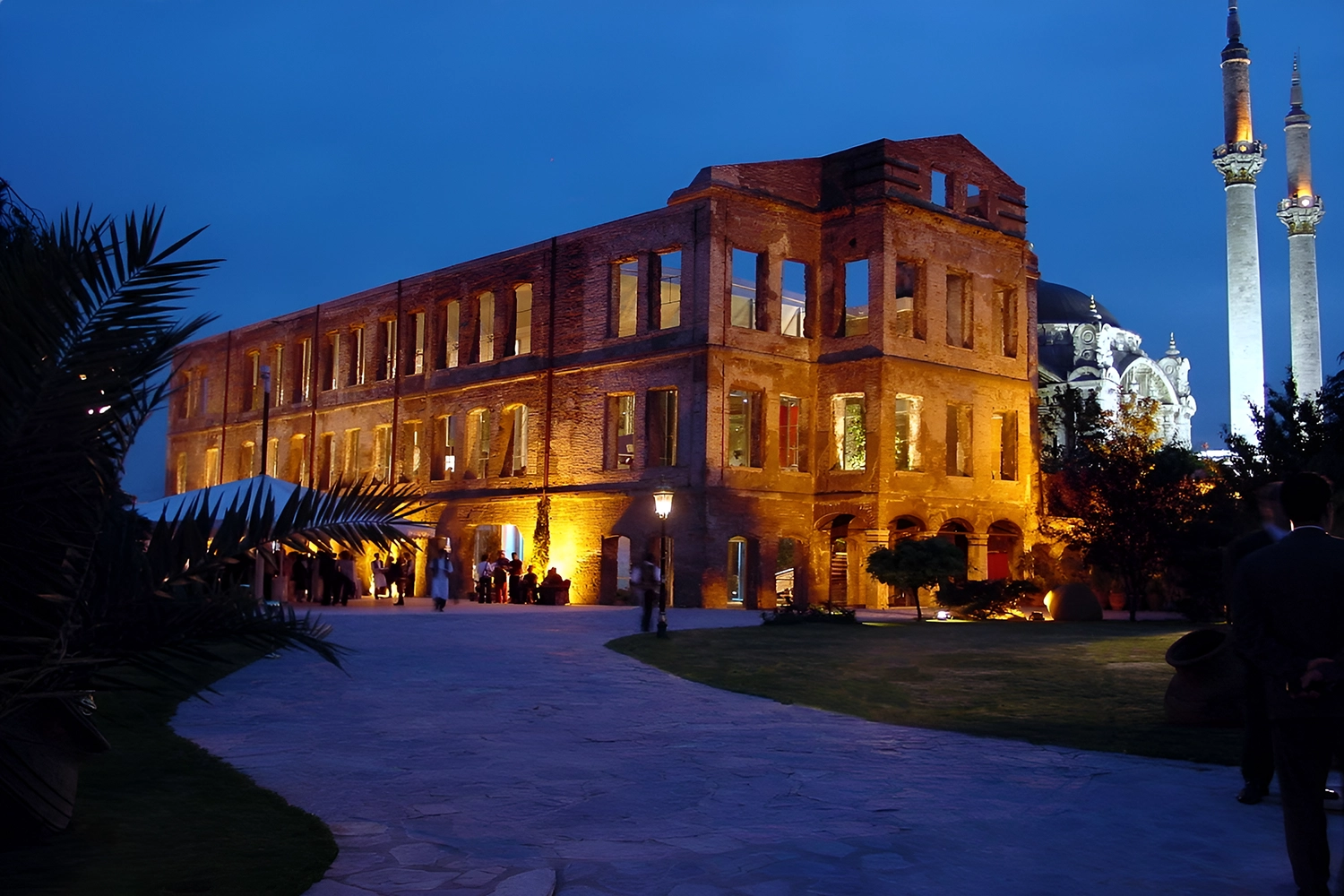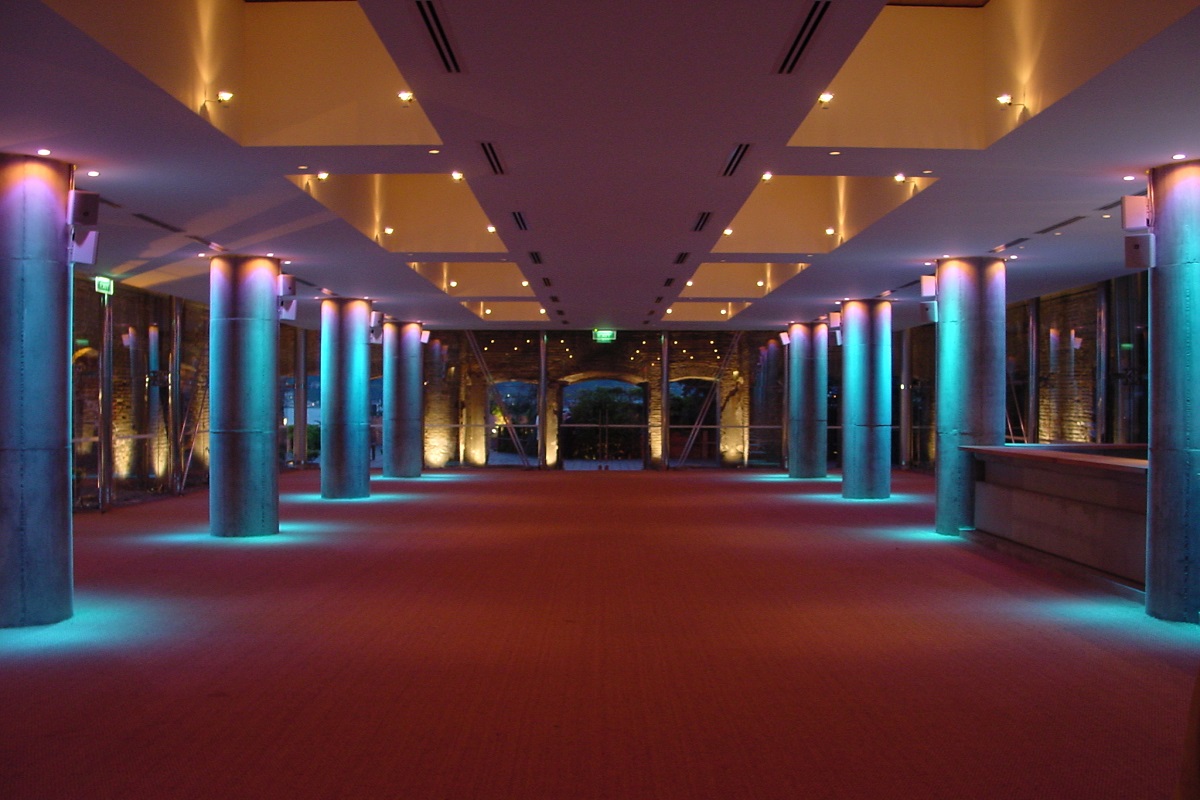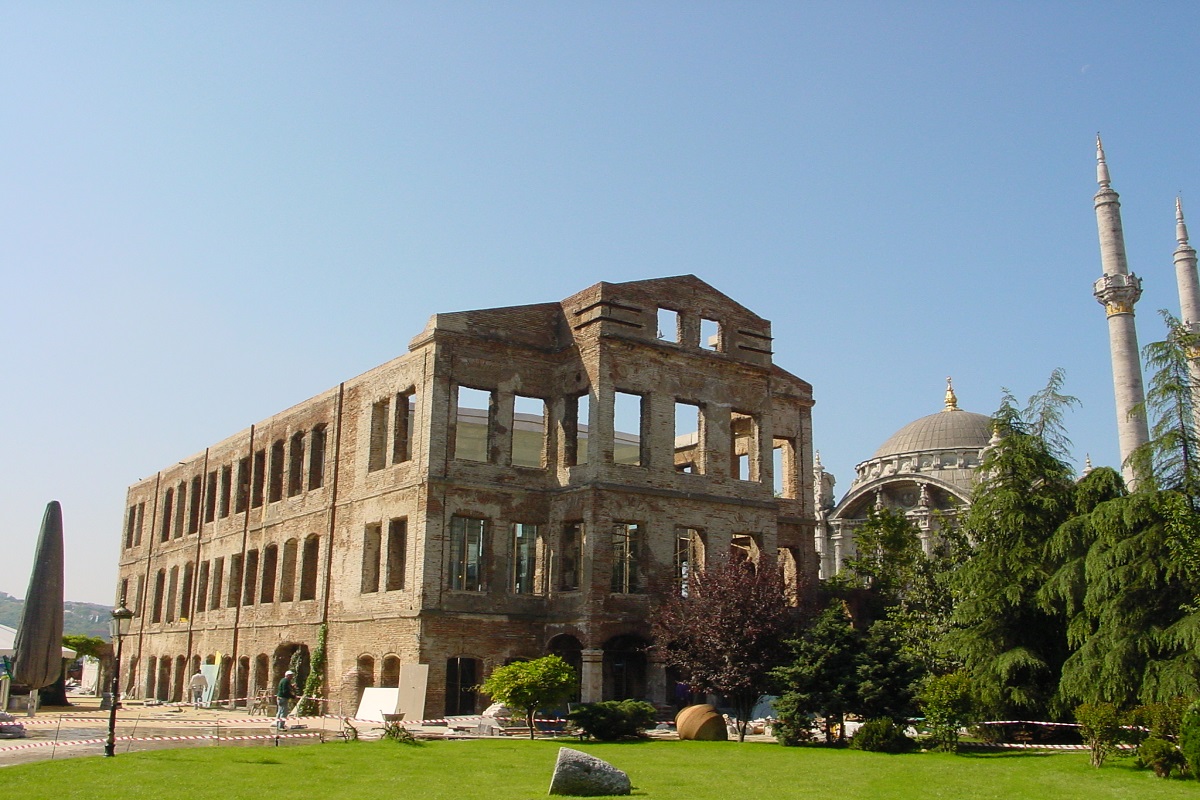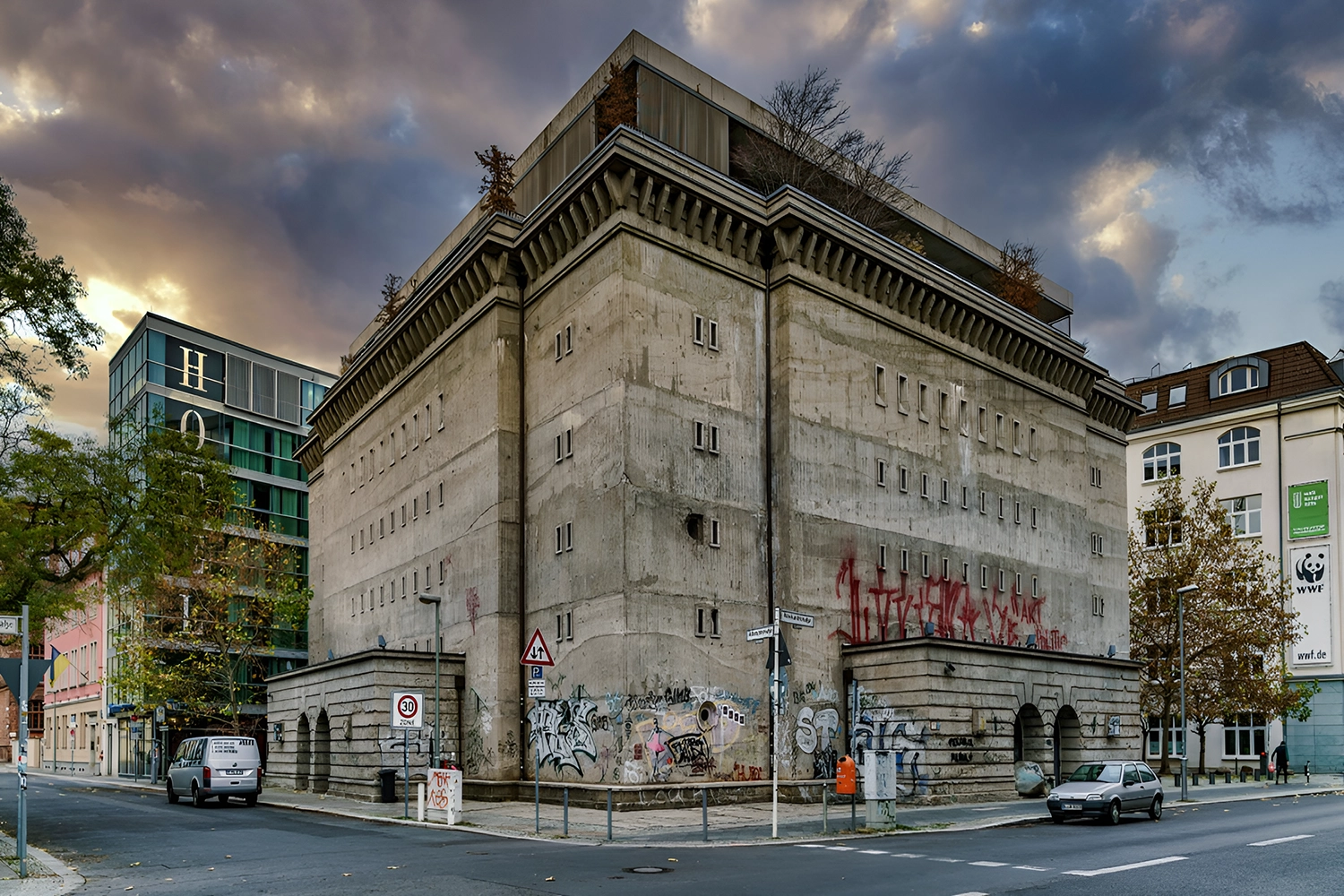
Esma Sultan Palace was built approximately 200 years ago for Esma Sultan, an Ottoman Sultan’s wife as a summer palace. Destroyed by fire over a century ago, the exterior brick walls are all that remain of the building.
Commissioned to renovate and redesign the space, Gokhan Avcioglu and GAD designed a thin but strong stainless steel and glass box that is suspended within the brick structure. Esma sultan is now a multi-purpose event space in Ortakoy, Istanbul, in the center of the city in a busy entertainment district on the banks of the Bosphorus. Planting a glass and steel box inside the ruins of a palace to create a covered venue that constantly reminds us of the multiple histories innate in the new design.








